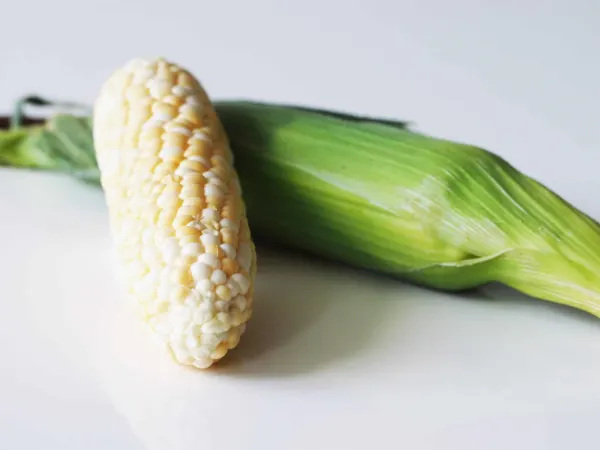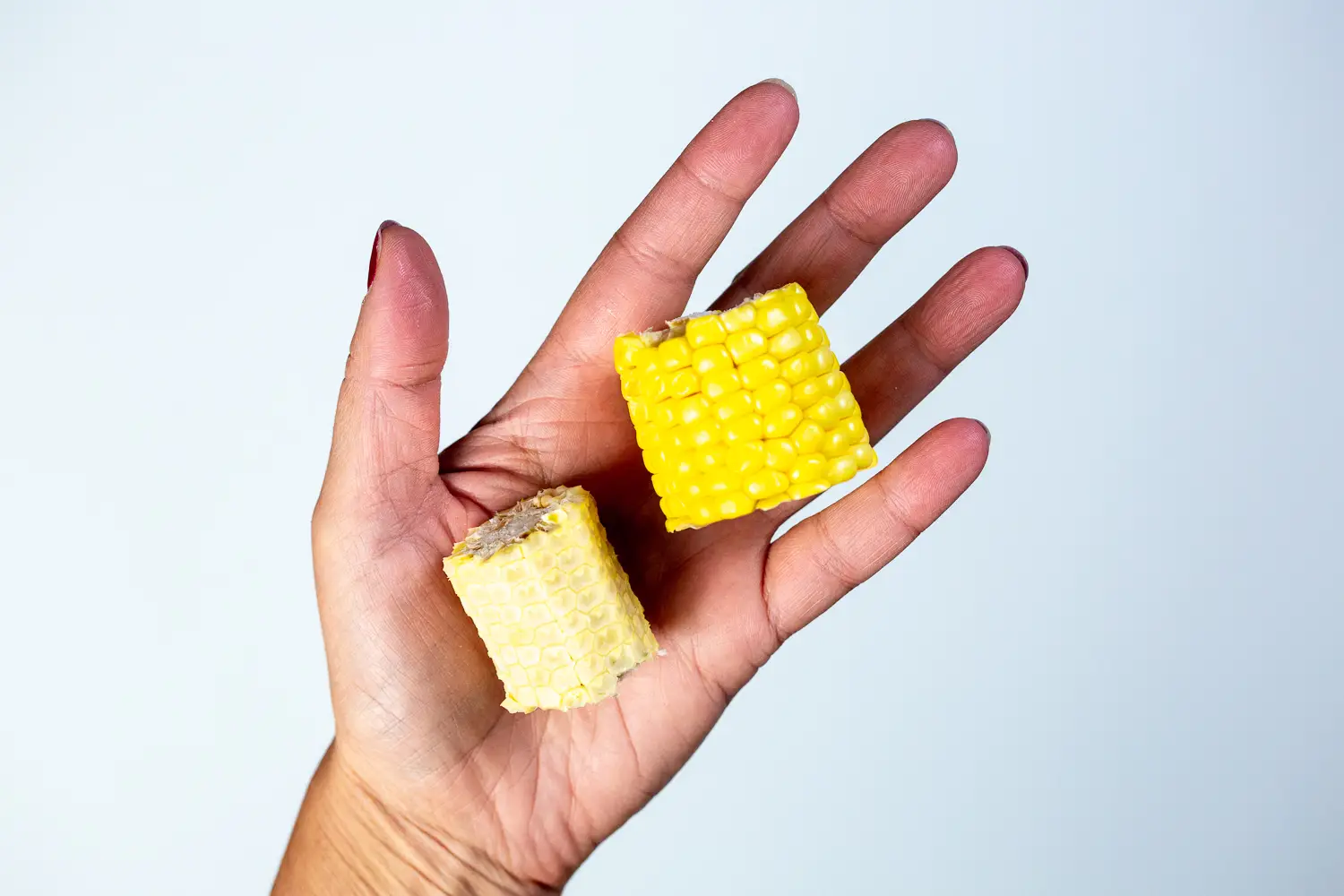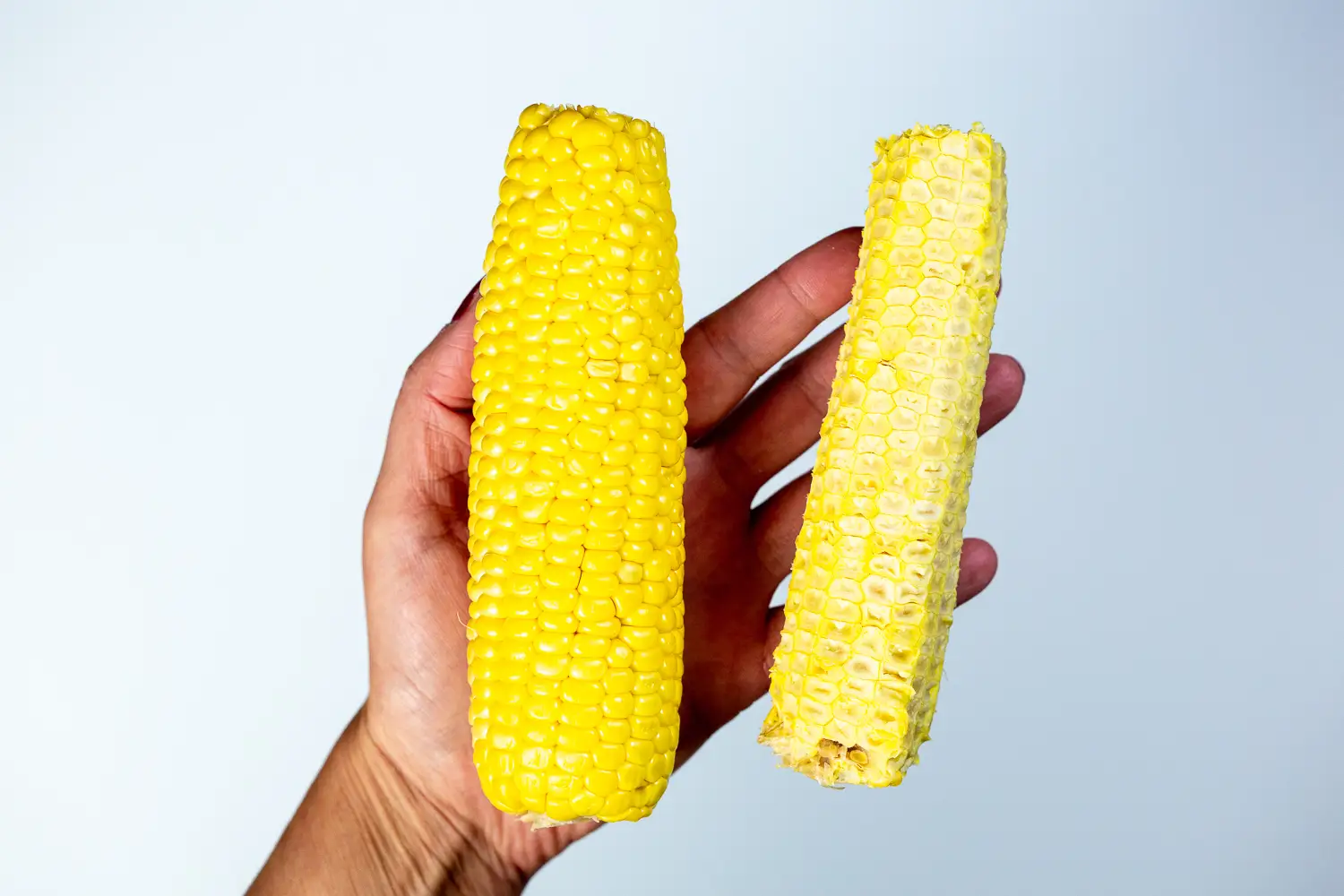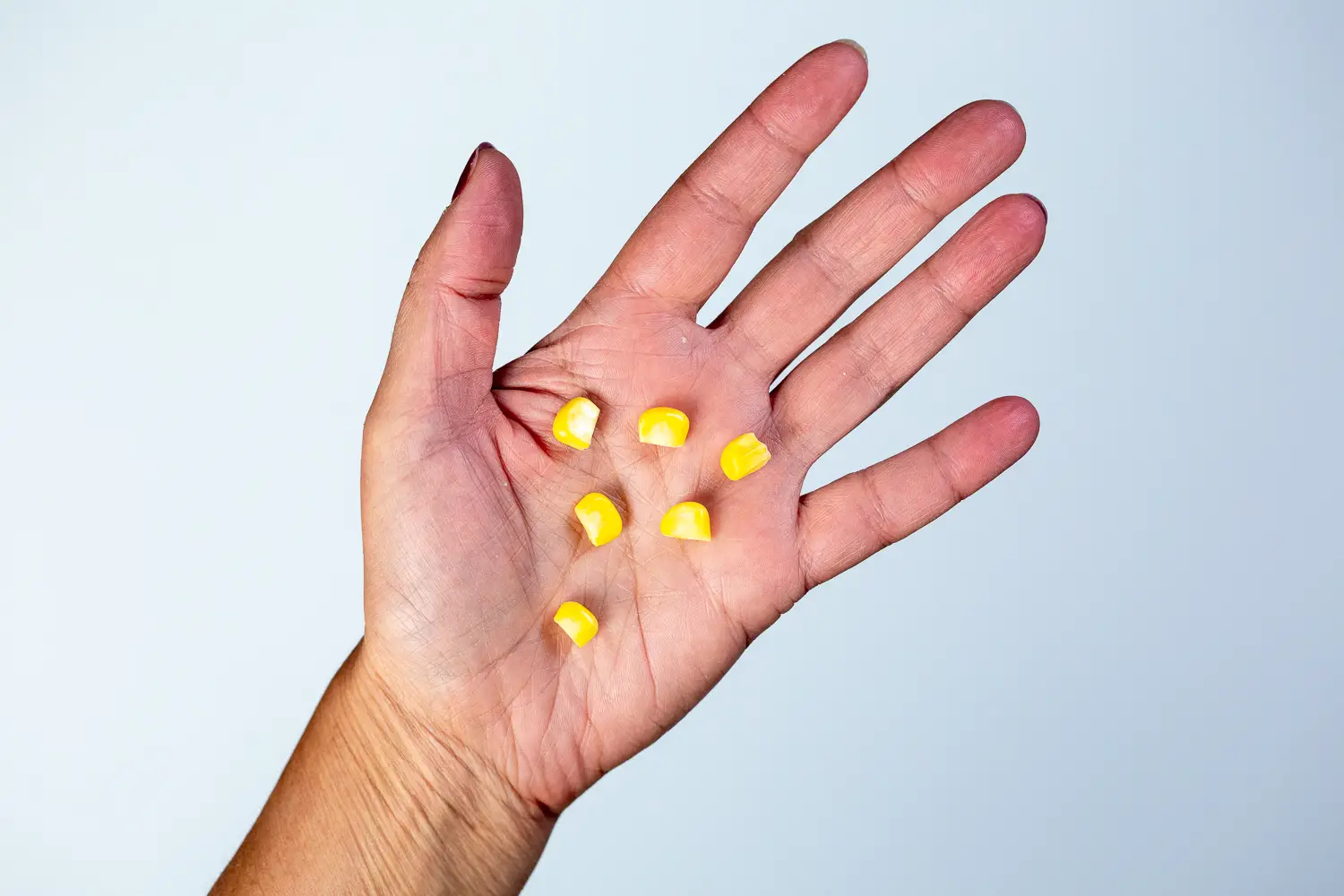Access our First Foods® Database in the Solid Starts App.
Learn moreCorn
Grain
Age Suggestion
6 months
Iron-Rich
No
Common Allergen
No

When can babies have corn?
When served as cooked corn on the cob, corn may be introduced as soon as baby is ready to start solids, which is generally around 6 months old. It is our professional opinion that cooked corn on the cob carries less risk than loose kernels for babies 6 months and older, as baby’s gnawing changes the kernel shape and reduces choking risk. Because of their small size, firmness, and slippery consistency, loose, whole corn kernels are a potential choking hazard for babies younger than 12 months of age.
See our popcorn page for information on that form of corn.
Corn is an ancient grain with origins in Central and South America, where it evolved from a wild grass called teosinte. People living in the region learned how to cultivate the grain long before the arrival of Europeans, who introduced the plant overseas with its Taíno name, maize. For thousands of years, corn has represented life and sustenance for the Indigenous peoples of the Americas, who consider the plant to be sacred and the origin of all peoples.
How do you serve corn to babies?
Every baby develops on their own timeline, and the suggestions on how to cut or prepare particular foods are generalizations for a broad audience.
6 months old +:
Offer cooked corn on the cob cut into 2-inch (5 cm) rounds so baby could hold a piece in one hand. Avoid serving loose corn kernels as they are a choking hazard for babies. If desired, you can also shave most of the kernels off and serve just the cob, which further reduces choking risk. While baby will get very little food in the belly this way, the activity of munching and gnawing on the cob can advance oral-motor development and strengthen jaw muscles.
9 months old +:
Continue to offer corn on the cob in small rounds to make it easy for baby to get at the kernels, If you’d like to offer a whole large cob, that’s fine. Just know that baby may hold it vertically and may only eat the kernels off the tip of the cob.
12 months old +:
At this age, you may also introduce loose corn kernels on their own, but start with only a few at a time to discourage the toddler from shoveling lots of corn in their mouth. After you feel confident that the child is safely eating loose corn on its own, consider offering it mixed into other dishes. Corn on the cob is also fantastic at this age, as it helps strengthen the jaw. At this age, you can serve any size cob you like. If you'd like to offer canned baby corn, go ahead. Just cut each piece lengthwise so they are no longer round.



Get daily meal plans and recipes for babies starting solids in our First 100 Days Meal Plan.
Videos
Is corn a choking hazard for babies?
Yes. Whole, loose corn kernels are small, rounded, and sometimes firm, qualities that increase the risk of choking. To reduce the risk, serve corn on the cob, as baby’s gnawing will mash the kernels, effectively changing both their round shape and slipperiness. Serving on the cob also prevents baby from scooping up lots of loose kernels at once and shoveling them into their mouth, where they can scatter and confuse the brain. As always, make sure you create a safe eating environment and stay within an arm’s reach of baby during meals.
Learn the signs of choking and gagging and more about choking first aid in our free guides, Infant Rescue and Toddler Rescue.
Is corn a common allergen?
No. Corn allergies are uncommon, but have been reported, with symptoms ranging from short-lived oral allergy symptoms to anaphylaxis. Some individuals with allergy to lipid transfer proteins or chitinase may also have a corn allergy. Corn is known to cross-react with other cereal grains, especially rice, wheat, and barley. However, most individuals with corn allergy can safely consume other cereal grains, and vice versa.
Is corn healthy for babies?
Yes. Sweet corn (the variety of corn typically available canned, frozen, and on the cob) is rich in carbohydrates and fiber, as well as a good source of folate, zinc, B vitamins, phosphorus and vitamin C–essential nutrients for baby’s growth. Sweet corn also contains phytochemicals that promote healthy vision and antioxidants to support baby’s immune system.
Is it normal to see corn in baby's poop?
Yes. It is normal to see corn kernels that look whole or undigested in baby’s poop, and baby is still getting valuable nutrition from the corn. The outer shell of corn is made from an insoluble fiber called cellulose, which is difficult to digest. When corn is seen in the stool, it is most often just this outer shell, as the inner contents are much easier to digest. Pooping patterns can vary significantly from child to child, so talk to your pediatric healthcare provider if you have concerns about baby’s pooping and digestive function.
Our Team
Written by
Expert Tips Delivered to Your Inbox
Sign up for weekly tips, recipes and more!
Copyright © 2025 • Solid Starts Inc







